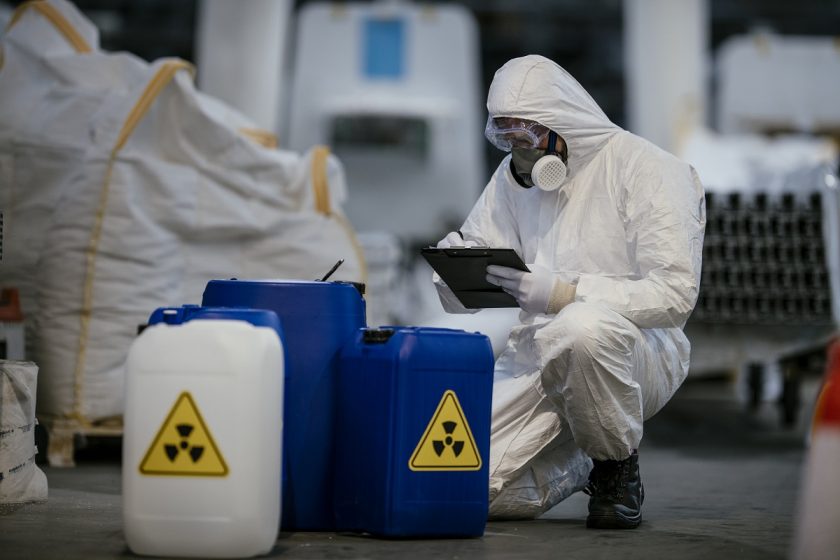No products in the cart.
What is the best type of coverall for my project?
Protective coveralls are essential depending on the work being carried out. There are also different types of coveralls that will be impacted by the environment and substances the worker is going to come into contact with or be exposed to. Establishing what chemicals or materials the worker is going to encounter is key to deciding the best type of protective coverall to wear. In these circumstances, day-to-day overalls or clothing may not offer sufficient protection, and therefore, an additional protective layer is required.
What is a coverall?
A coverall is a protective suit that covers a wearer’s body, excluding the face, hands, and feet. These coveralls are single-use or disposable due to the applications they are used for. They can’t be washed or reused. These other areas will require the appropriate personal protective equipment (PPE) or respiratory protective equipment (RPE) for whatever substances or hazardous materials are involved in the project.
The ankles, wrists and hood are generally elasticated to create a seal and to keep harmful substances from entering the protective coverall.
What are the different types of coveralls?
The type of coverall is dependent on the material composition and the different features and benefits they offer:
Non-Woven: A complete unstructured fibre format but distributed to be uniform, creating a dense structure that provides much better protection than woven fabrics.
PP (Polypropylene): This is a polymer that is pulled into a fibre that can be used to make clothing. It is a non-woven material that doesn’t absorb moisture.
SMS/SMMS: These are abbreviations for Spunbond-Meltblown-Spunbond polypropylene. The composition is 3 layers, 0.1mm fibre middle layer that is melt-blown into a dense structure, creating a fabric barrier that is protected by a layer of spun-bonded PP on either side. SMMS or Spunbond-Meltblown-Meltblown-Spunbond is a fabric that consists of 4 layers, much like SMS but with an additional melt-blown core.
MF: A 2-layer fabric with a protective layer that is made up of a microporous polyethylene film of 6-20 μm. The film is fixed to a base layer of non-woven fibres. Once this film becomes worn out or scratched, it will no longer offer the required level of protection.
Understand the current European ‘Types’
Category III: Protective clothing intended to protect against serious or fatal risks.
| EN ‘Types’ | Definition |
| EN 943 – 1 & 2 “Type 1” | Gas Tight Chemical Protection Clothing Gas-proof suits that are fully sealed in accordance with EN943 |
| EN 943 – 1 “Type 2” | Non Gas Tight Chemical Protection Suits Offers limited gas-tightness, prevents dust, liquids, and vapours from penetrating in accordance with EN 14126. |
| EN 369/EN 14605/EN 14126 “Type 3 & 3B” | Liquid Tight Suits Protects against strong discretional jets of liquid chemicals such as hoses and nozzles. Has welded seams, penetration testing has to be in accordance with EN 369 and must provide guidance on chemicals, EN 14605. Type 3B protects against biologically contaminated particles, EN 14126. |
| EN 369/EN 14605/EN 14126 “Type 4 & 4B” | Spray Tight Suits Protects against liquid chemical saturation. Splash-proof protection, must have welded seams. Penetration testing to be in accordance with EN 369 providing information on protection related to the individual chemicals, EN 14605. Type 4B protects against biologically contaminated particles, EN 14126. |
| EN 13982/EN 14126 “Type 5 & 5B” | Dry Particulate Protection Full body protection against airborne solid particles. These suits protect against harmful substances, EN 13892. Type 5B protects against biologically contaminated particles, EN 14126. |
| EN 13034/EN 14126 “Type 6 & 6B” | Light Spray Suits Provides light spray or splash proof protection from liquid chemicals. These protect the individual when there is risk of splashing on suit, EN13034. . Type 6B protects against biologically contaminated particles, EN 14126. |
EN Standard Notes:
EN 14126: Protects against biologically contaminated particles, EN 14126.
EN 1073-2: Protects against radioactive particle contamination in accordance with EN 1073-2 (not against radioactive radiation).
EN 1149-5: Electrostatic protection according to EN 1149-5 (with proper earthing
Protection against harmful or hazardous substances is crucial when working with them, and ensuring you have all the correct equipment is essential. Coveralls protect your body but also prevent wider contamination when working with materials such as asbestos, where the fibres can stick to surfaces and spread outside of a controlled environment.
Each project should be assessed on a case-by-case basis, as the risks can vary and may need to be tailored in each case. In order to be fully protected from the harmful substance that you are working with, it is vitally important that you equip yourself with the correct and full protective equipment. This will be different in each case and should be assessed individually.
It is also important to consider other ways a worker can be exposed to the type of hazardous material or substance to ensure they are fully protected. This includes PPE for things like disposable boot covers, safety glasses, gloves, and RPE to prevent inhalation of dangerous particles where substances can become airborne.
If you have any questions about your coverall requirements, please don’t hesitate to contact your local branch where one of the team who will be happy to help you further.
Read more about managing asbestos risks and the relevant PPE in the ACOP: Management and Removal of Asbestos on page 89.
